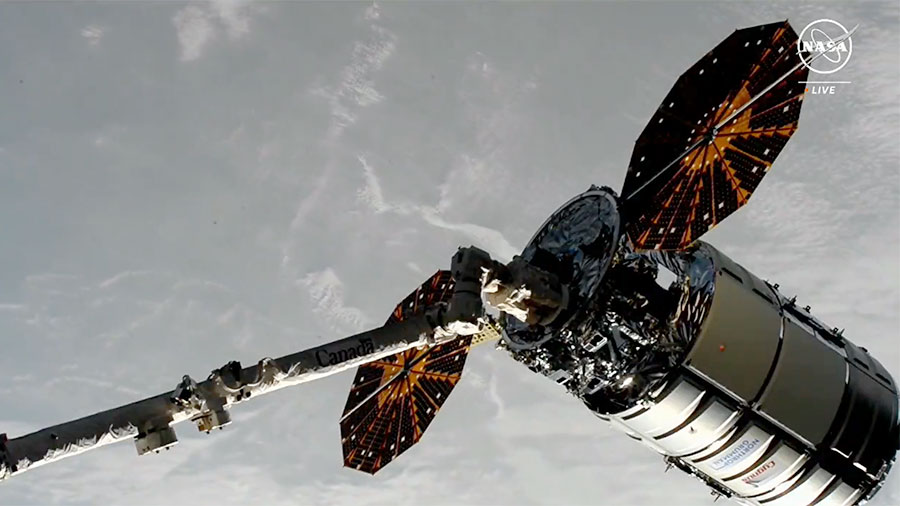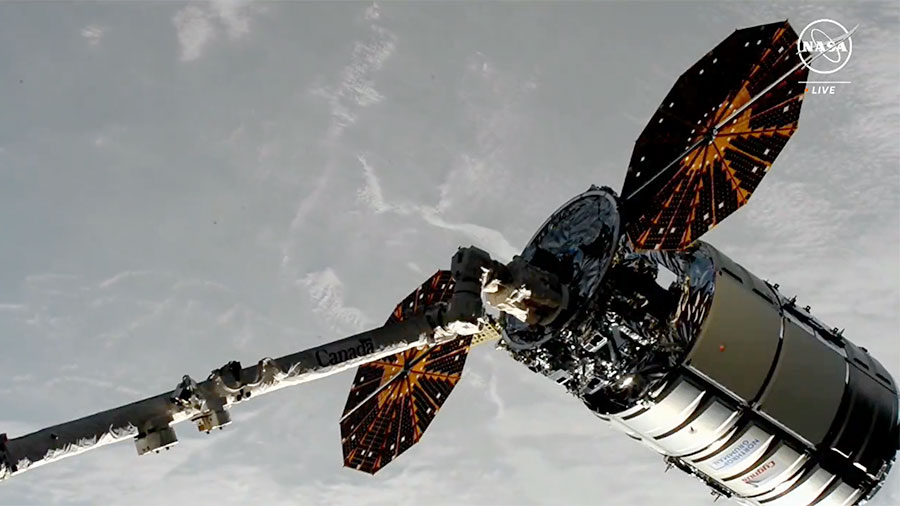
Northrop Grumman’s Cygnus cargo craft has arrived at its new home for the next six months and the International Space Station residents have begun unloading some of its 8,200 pounds of science and supplies.
NASA Flight Engineer Matthew Dominick captured Cygnus with the Canadarm2 robotic arm at 3:11 a.m. EDT on Tuesday following its automated approach and rendezvous. The maneuver marked the 50th free-flying capture for Canadarm2. Just over two hours later mission controllers on Earth remotely commanded the Canadarm2 and installed Cygnus to the Unity module’s Earth-facing port where it will stay until January. Cygnus began its trip to the orbital outpost with a launch atop a SpaceX Falcon 9 rocket from Florida at 11:02 a.m. EDT on Sunday.
Dominick later joined NASA Flight Engineer Jeanette Epps and conducted cable connections and leak checks before opening Cygnus’ hatch and entering the space freighter for the first time. Next, the rest of the NASA astronauts including Tracy C. Dyson, Mike Barratt, Suni Williams, and Butch Wilmore started offloading research samples stowed in Cygnus and preserved in portable science freezers and double coldbags. Those samples were then placed inside station science freezers in preparation for upcoming research. The orbital residents will soon be exploring liquid and gas flows, centripetal force, DNA repair mechanisms, cellular expansion, and more.
During a break in the cargo activities Dominick set up photography gear in the cupola and took pictures of the Moon to measure sunshine reflected from the Earth. Dyson worked in the Destiny laboratory module and connected a microscope to an advanced research incubator to support space biology investigations.
The orbital lab’s three cosmonauts representing Roscosmos stayed focused on their science and maintenance schedule throughout Tuesday. Commander Oleg Kononenko began his morning setting up carbon dioxide monitors and installing Earth observation hardware. During the afternoon, the five-time station visitor studied futuristic planetary piloting techniques on a computer. Flight Engineer Alexander Grebenkin attached sensors to himself measuring his heart activity during an hour-and-a-half long relaxation session. Next, he jogged on a treadmill for a fitness test before ending his day with computer maintenance in the Nauka science module. Flight Engineer Nikolai Chub worked throughout the day servicing hardware batteries and exercise gear.
Learn more about station activities by following the space station blog, @space_station and @ISS_Research on X, as well as the ISS Facebook and ISS Instagram accounts.
Get weekly video highlights at: https://roundupreads.jsc.nasa.gov/videoupdate/
Get the latest from NASA delivered every week. Subscribe here: www.nasa.gov/subscribe

